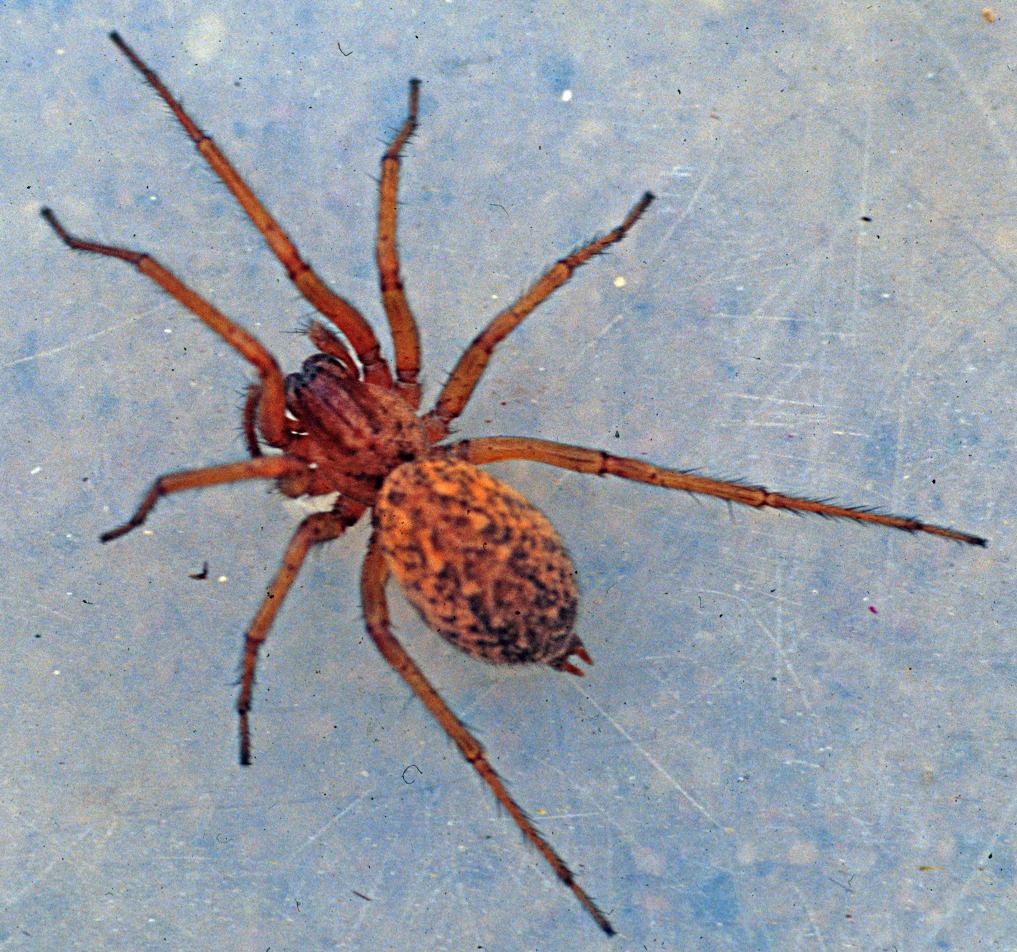 Hobo Spiders - November 21, 2007 Jeff Schalau, Associate Agent, Agriculture & Natural Resources, Arizona Cooperative Extension, Yavapai County The hobo spider (Tegenaria agrestis) was accidentally introduced to the United States (through the Port of Seattle) sometime before the 1930's. It almost certainly arrived via commercial shipping vessels carrying cargo originating from agricultural areas of Europe. By 1968, it had become established as far east as Spokane, Washington and Moscow, Idaho, and as far south as Corvallis, Oregon. Today, it is known to occur in Washington, Oregon, Idaho, north and central Utah, and Western Montana. It has not been reported in Arizona and there is currently no cause for alarm. The hobo spider has gained notoriety because it is poisonous and its bite causes necrotic lesions similar to the bite of brown spiders (Loxosceles spp.) which includes the brown recluse). In its native European range, the hobo spider nests outdoors and is not reported to be a serious threat to humans. In the United States however, the hobo spider has rapidly adapted to living in close proximity to humans and successfully expanded its range. These apparent differences could be due to genetic differences between populations, but is more likely due to lack of competition from other spider species and/or environmental conditions. The hobo spider is a member of the funnel-web spider family Agelenidae. Funnel-web spiders are long-legged, swift-running spiders that build funnel or tube-shaped retreats. Hobo spiders rarely climb structures like other spiders do. It has a brown cephalothorax (the front body region where the legs are attached) with darker brown markings and brown legs. The abdomen (the second body region) has a distinctive pattern of yellow markings on a grey background, although this pattern can be difficult to discern without the aid of a microscope or hand lens. Unlike many other similar-looking spiders, hobo spiders do not have dark bands (like multiple arm bands) on their legs. The hobo spider breeding cycle begins with eggs deposited in the fall which begin hatching in the spring. The juvenile hobo spiders grow and develop over the summer (or several summers) and will also overwinter before reaching maturity the following year. Males and females will mature from June to September. Males seek out females for mating during the summer and most die before October. Mated females start laying eggs in mid-September, with one to four egg sacs produced over a period of four weeks. There is some disagreement among researchers as to the length of the hobo spider life cycle. Only one year may be required to complete a generation among the warmer coastal regions; however, inland populations are believed to require two or three years to complete a generation. If the hobo spider does reach Arizona, it will likely reproduce more quickly in lower elevation areas. Hobo spiders are most commonly encountered by humans July through September when males wander in search of female mates. This is when most bites are known to occur. Female hobo spiders tend to stay in their webs and are not usually found wandering. Anecdotal information has indicated that hobo spiders may be aggressive. However, based on the experience of Utah researchers, they seem to be no more aggressive than other spiders, such as grass spiders or wolf spiders. In closing, it is not my intention to alarm people. We do not have any records documenting hobo spider occurrence in Arizona. Conversely, there is a distinct possibility that it will be introduced here at some point in the future. The goal of this column is not to scare, but to educate. Spiders, including black widows and brown spiders, are insect predators and are considered beneficial when found in their native range and habitat. Again, no need for alarm – just be aware. More information on the hobo spider, including photos, can be found by using the links provided below. The University of Arizona Cooperative Extension has publications and information on gardening and pest control. If you have other gardening questions, call the Master Gardener line in the Cottonwood office at 646-9113 ext. 14 or E-mail us at cottonwoodmg@yahoo.com and be sure to include your address and phone number. Find past Backyard Gardener columns or submit column ideas at the Backyard Gardener web site: http://cals.arizona.edu/yavapai/anr/hort/byg/. University of California Publication on Hobo Spiders University of Idaho Publication on Hobo Spiders Utah State University Publication on Hobo Spiders |